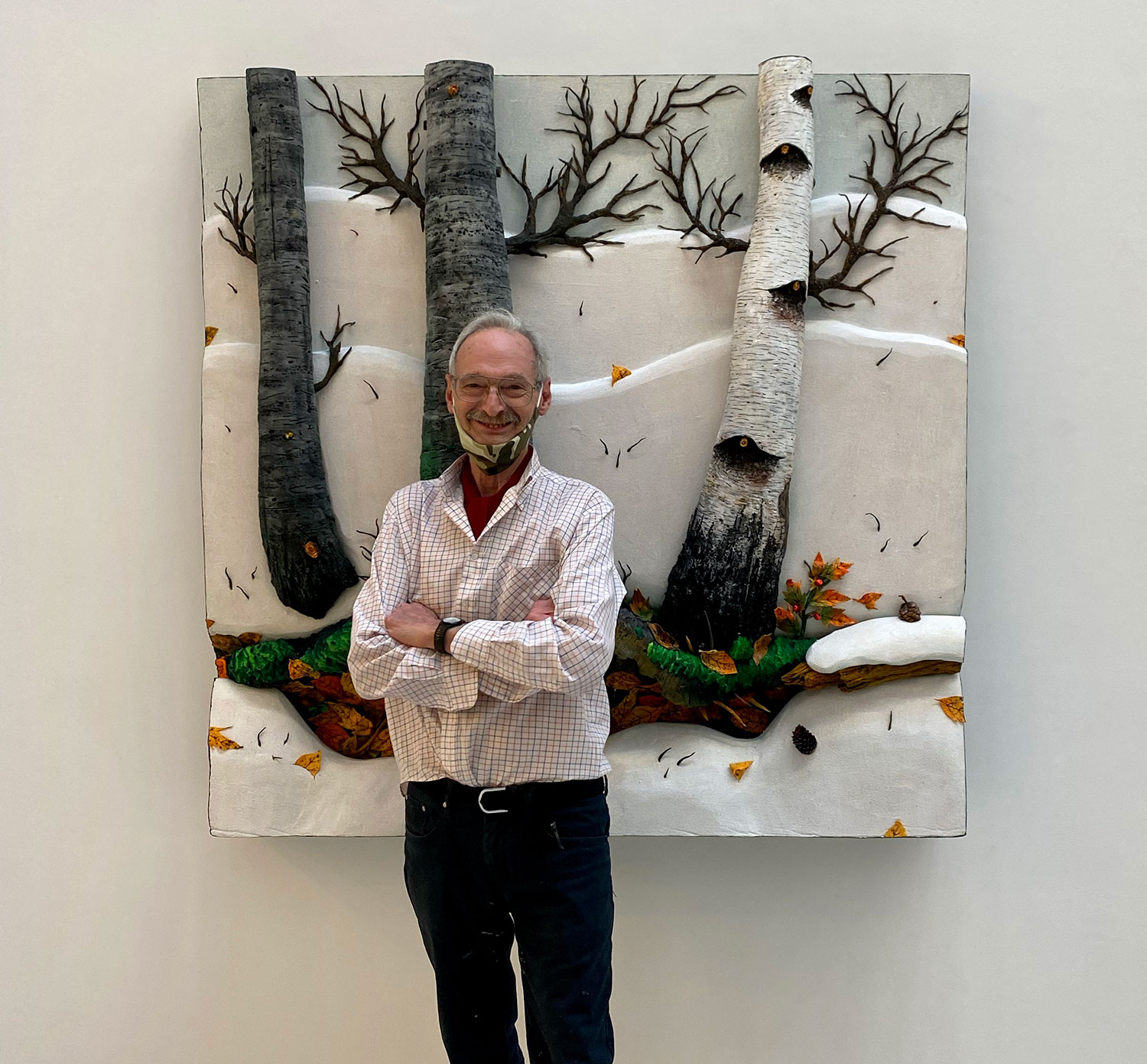
ANNOUNCEMENT
Piero Gilardi (1942-2023)
Mar. 07, 2023
Our collaboration with Piero Gilardi began in 2019 following a meeting initiated by Valerie Da Costa who curated his first exhibition at the gallery. We have always supported artists who have social and societal concerns. It was a great privilege to work with this great artist, especially during our exhibitions in Paris in 2020 and in Brussels in 2021.
Piero Gilardi, a figure of arte povera, does not yet have the recognition of some of his colleagues, probably because he was more involved than all the others. In the early 70s, he put his career on hold for a few years to devote himself to militant, political and ecological activities. Then he resumed his artistic career and never abandoned his commitments, accompanying the Fiat workers during the deindustrialization in Turin or creating, in partnership with the City of Turin, the Parco d'Arte Vivente (PAV), a space open to artistic experiences oriented towards ecology and biotechnology.
From 1965 he made his first nature carpets (tappeti-natura) in polyurethane foam, which he exhibited at the Sperone Gallery (Turin) in 1966 and then in 1967 at the Sonnabend Gallery (Paris) and at the Fischbach Gallery (New York).
He collaborated in the realization of two international exhibitions: When Attitudes Become Form (Bern, 1969) and Op Losse Schroeven (Amsterdam, 1969) which show the artistic issues of the moment (Arte Povera, Land Art, Antiform Art). He was also exhibited at the 45th Venice Biennale in 1993.
An extraordinarily influential artist, he was a close friend of Warhol and even acted in one of his films. He has been a bridge between American and European art through his correspondent columns in Flash Art.
Very close to France, he lived there for a long time and was fluent in French. In 1987, he was the president of the Ars Technica association linked to the Cité des Sciences et de l'Industrie in La Viltette, bringing together philosophers, artists and scientists to discuss the relationship between art and new technologies.
At the end of our exhibition in 2020, thanks to the friends of the Centre Pompidou, we had an exceptional Nature carpet from the 1960s entered into the collections of the Musée National d'Art Moderne. Piero had, on this occasion, been very generous.
I am obviously extremely touched by Piero's passing. With the confidence of his family, we will continue to defend his work. The first major occasion will be at Art Basel where we will be presenting historic works from the 1960s in June 2023.
Piero represented the dna of the gallery, an artist open to social issues but with a singular art form accessible to all.
Notre collaboration avec Piero Gilardi à commencée en 2019 suite à une rencontre initiée par Valérie Da Costa qui a été la curatrice de sa première exposition à la galerie. Nous avons toujours soutenu les artistes qui ont des préoccupations sociales et sociétales. Ce fut un immense privilège de travailler avec ce grand artiste notamment lors de nos expositions à Paris en 2020 et à Bruxelles en 2021.
Figure de l'arte povera, Piero Gilardi n'a pas encore la reconnaissance de certains de ses confrères, probablement parce qu'il était plus impliqué que tous les autres. Au début des années 70, il mit sa carrière entre parenthèses pendant quelques années pour se consacrer à des activités militantes, politiques et écologiques. Puis, il a repris sa carrière artistique et n'a jamais abandonné ses engagements en accompagnant les ouvriers de Fiat lors de la désindustrialisation à Turin où en créant en partenariat avec la Ville de Turin le Parco d'Arte Vivente (PAV) un espace ouvert aux expériences artistiques orientées vers l'écologie et la biotechnologie.
À partir de 1965, il réalise ses premiers tapis-nature (tappeti-natura) en mousse polyuréthane qu'il expose à la galerie Sperone (Turin) en 1966 puis en 1967 à la galerie Sonnabend (Paris) et à la galerie Fischbach (New York).
Il a collaboré à la réalisation de deux expositions internationales : When Attitudes Become Form (Bern, 1969) et Op Losse Schroeven (Amsterdam, 1969) qui montrent les enjeux artistiques du moment (Arte Povera, Land Art, Antiform Art). Il a également été exposée à la 45e Biennale de Venise en 1993.
Artiste extraordinairement influant, il a été un ami proche de Warhol et a même joué dans l'un de ses films. Il a été une passerelle entre l'art américain et l'art européen grâce à ses chroniques de correspondant dans Flash Art.
Très proche de la France, il y a vécu une longue période et parlait couramment Français. En 1987,il est le président de l'association Ars Technica liée à la Cité des Sciences et de l'Industrie à la Viltette regroupant des philosophes, des artistes, des scientifiques autour des relations entre l'art et les nouvelles technologies.
Nous avions fait entrer, à l'issue de notre exposition en 2020 et grâce aux amis du Centre Pompidou, un exceptionnel tapis Nature des années 60 dans les collections du Musée National d'Art Moderne. Piero avait, à cette occasion, été d'une tres grande générosité.
Je suis évidement extrêmement touché par la disparition de Piero. Nous allons, avec la confiance de sa famille, continuer de défendre son travail. La première grande occasion sera à Art Basel ou nous présenterons en juin 2023 des oeuvres historiques des années 1960.
Piero représentait l'adn de la galerie, un artiste ouvert aux questions de société mais avec dans sa démarche le développement d'une forme artistique singulière et accessible à tous.

